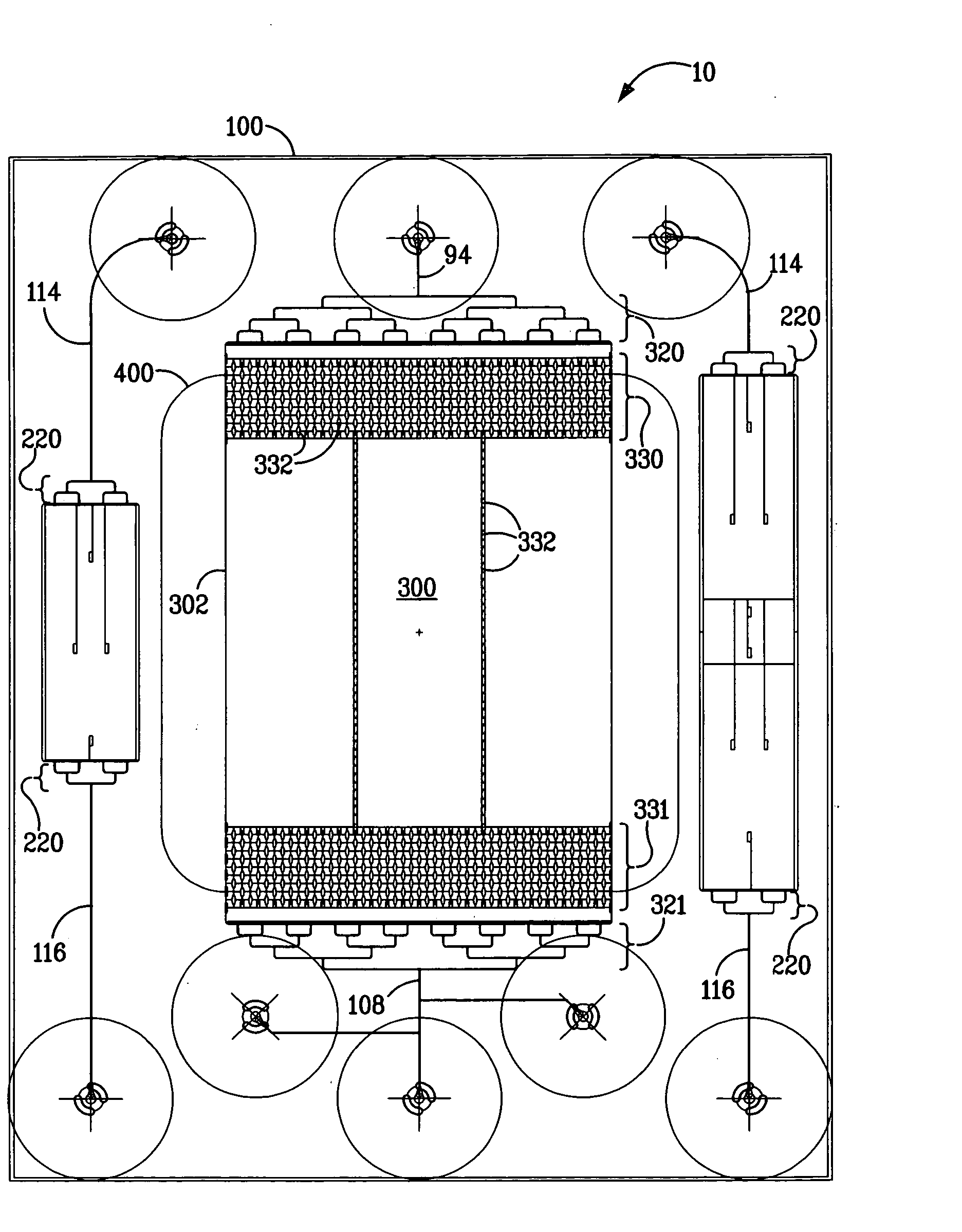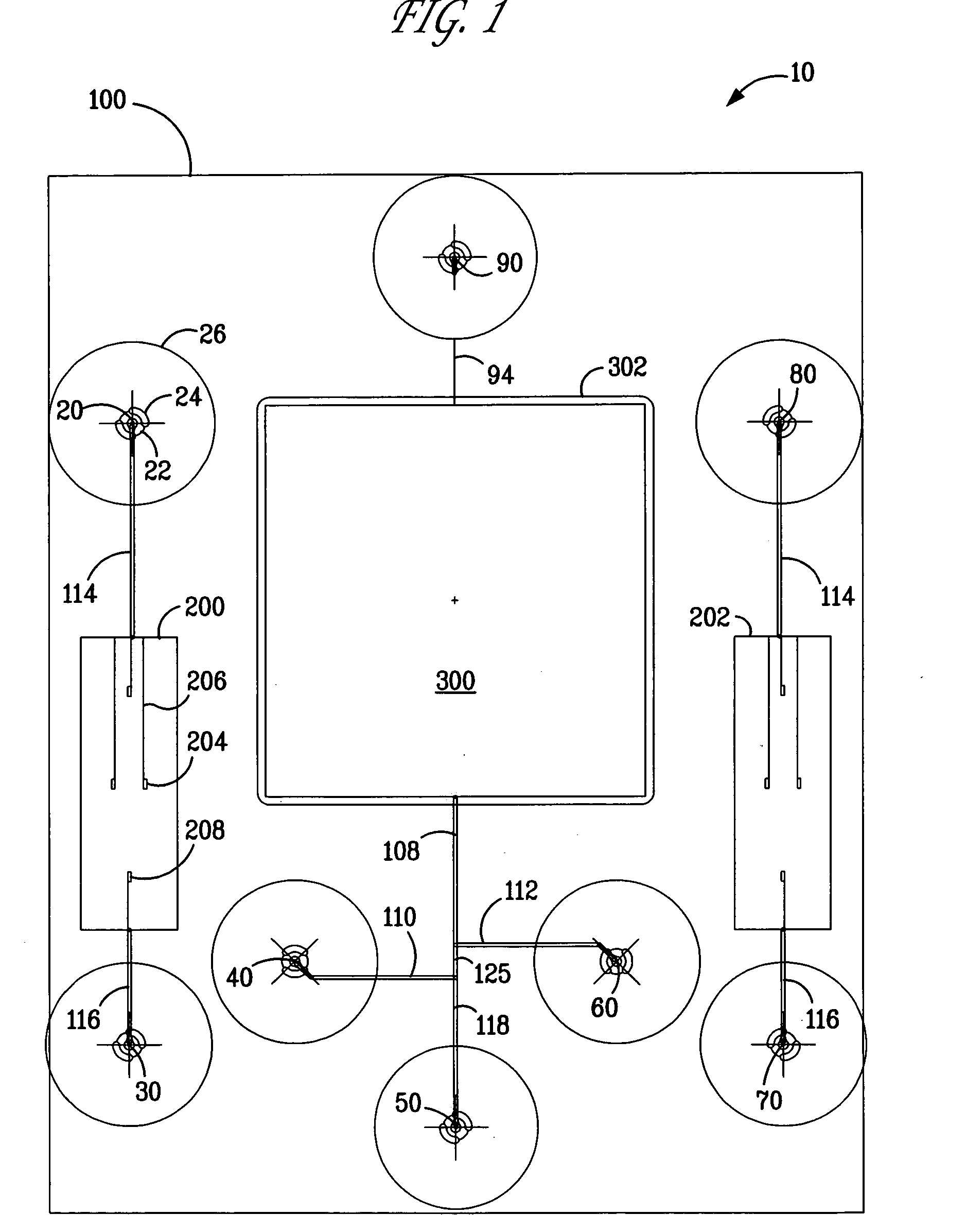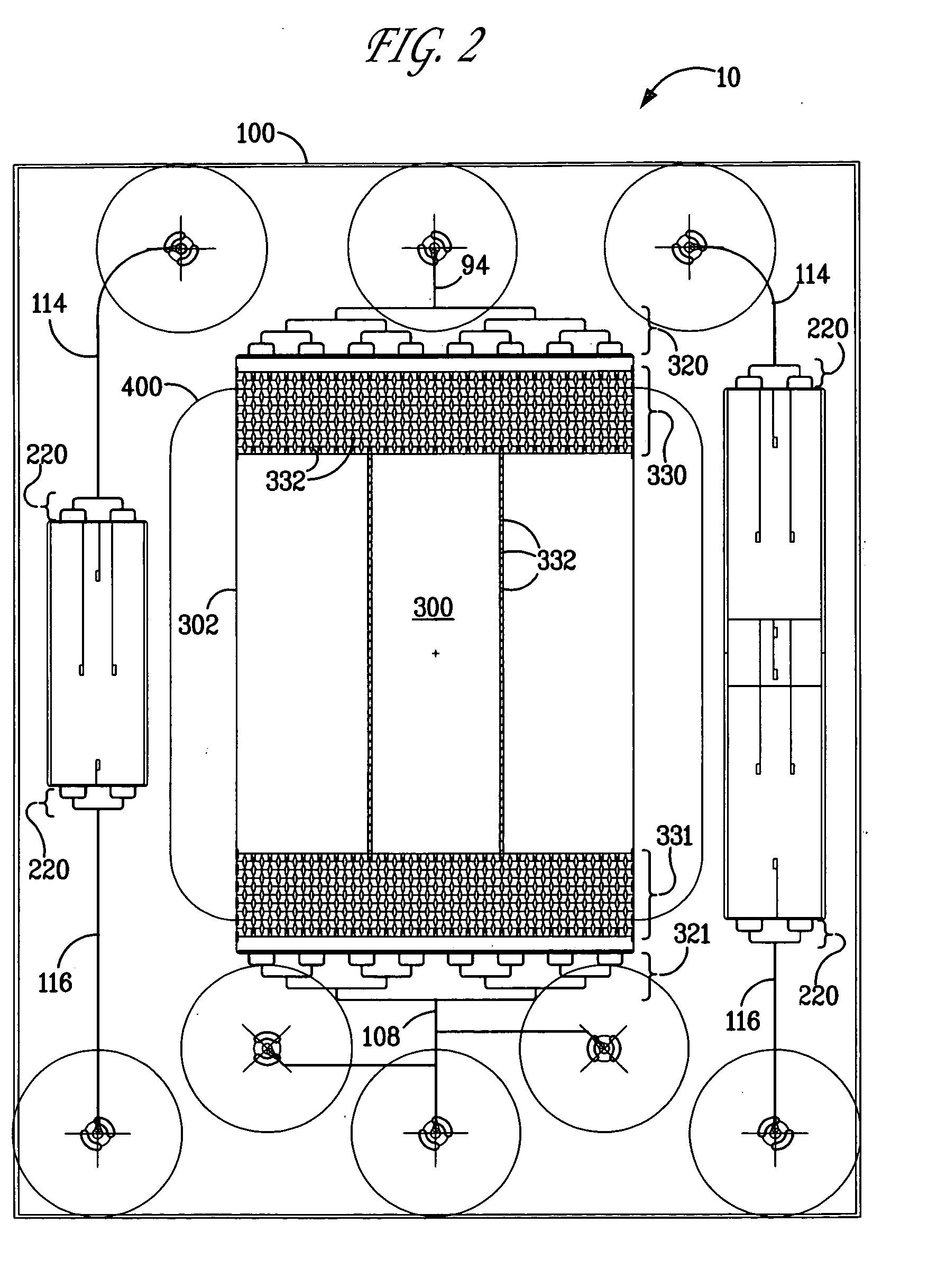Microfluidic integrated microarrays for biological detection
a microfluidic chip and integrated technology, applied in the field of microfluidic devices, can solve the problems of long and tedious processing time of rna/dna sample preparation, affecting the detection efficiency of microfluidic chips, and requiring up to four days, so as to reduce the required sample volume, reduce the preparation time of samples, and reduce the effect of required sample volum
- Summary
- Abstract
- Description
- Claims
- Application Information
AI Technical Summary
Benefits of technology
Problems solved by technology
Method used
Image
Examples
examples
[0090] A microfluidic chip was fabricated containing a DNA gene microarray that is capable of detecting thousands of genes using a single experimental sample. The microfluidic chip of FIG. 8, inset, was produced in fused silica using standard wet-etching photolithography procedures. The chip layout is essentially the same as that depicted in FIG. 2. The compact design feature (2.5 cm×3.1 cm) enabled the production of six devices per wafer and enabled the use of low volumes of fluids suitable for gene microarray analysis. This microfluidic chip design also provided the ability to spot content genes after thermal bonding of the base and cover substrates (1100° C.). The open microarray probe design provided the ability to rapidly change the probe content sets. The open microarray design also enabled the performance of custom cDNA microarray construction (up to approximately 14000 spots) using a custom fabricated arrayer which can be programmed to deposit probes in complex architectures...
PUM
| Property | Measurement | Unit |
|---|---|---|
| thickness | aaaaa | aaaaa |
| mean distance | aaaaa | aaaaa |
| length scale | aaaaa | aaaaa |
Abstract
Description
Claims
Application Information
 Login to View More
Login to View More - R&D
- Intellectual Property
- Life Sciences
- Materials
- Tech Scout
- Unparalleled Data Quality
- Higher Quality Content
- 60% Fewer Hallucinations
Browse by: Latest US Patents, China's latest patents, Technical Efficacy Thesaurus, Application Domain, Technology Topic, Popular Technical Reports.
© 2025 PatSnap. All rights reserved.Legal|Privacy policy|Modern Slavery Act Transparency Statement|Sitemap|About US| Contact US: help@patsnap.com



